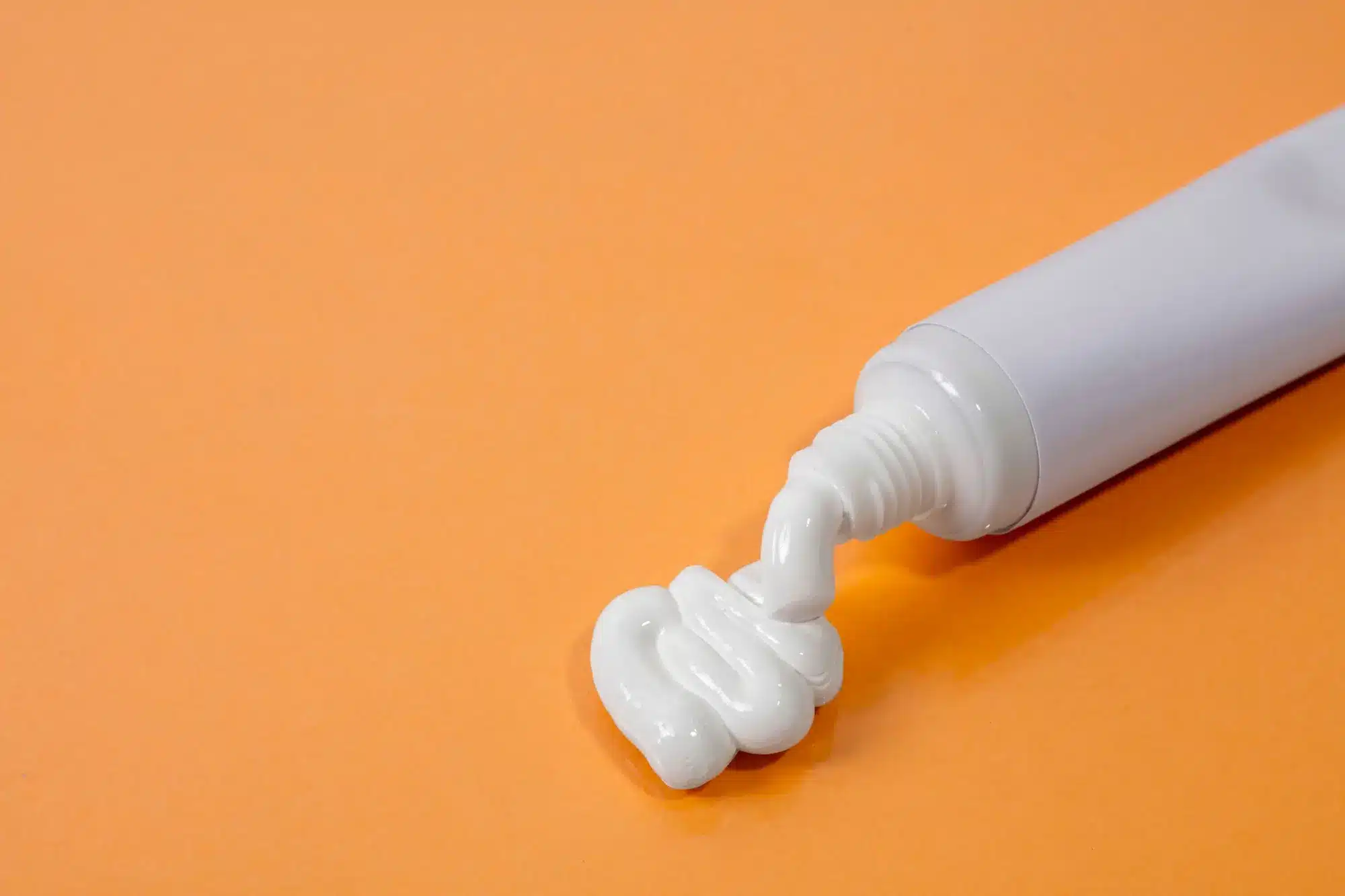
EMLA cream is a widely trusted topical anesthetic that reduces discomfort during minor skin procedures such as venipuncture, tattooing, and dermatologic surgeries. Its unique formulation—2.5% lidocaine and 2.5% prilocaine in a eutectic mixture—enhances skin absorption, allowing for fast and effective localized anesthesia.
Praised for its ease of use and consistent results, EMLA has become a go-to option for clinicians and patients seeking pain control during non-invasive treatments. However, its effectiveness depends on proper application—including correct dosage, timing, and site preparation.
This article offers a concise, physician-friendly guide to using EMLA cream effectively, covering recommended techniques, safety considerations, and tips for maximizing its anesthetic potential in clinical practice.
Key Takeaways
- EMLA cream combines 2.5% lidocaine and 2.5% prilocaine, offering effective local anesthesia for minor skin procedures when used correctly.
- Proper application includes skin cleansing, applying a thick layer of cream, and using an occlusive dressing to enhance absorption.
- Dosage varies by procedure type: minor procedures typically require 2.5g for 1 hour, while more extensive or sensitive treatments may need up to 5g for 1–2 hours.
- Safety considerations include avoiding use in patients with lidocaine/prilocaine allergies, methemoglobinemia, or G6PD deficiency, and adjusting doses for pediatric patients.
- Off-label uses should involve thorough counseling, informed consent, and professional oversight.
- Application timing is critical; peak numbing occurs between 2–3 hours, so planning ahead is key for effective results.
- Patient-specific factors like age, weight, and skin condition should guide dosage and duration for safe and personalized care.
About: Doctor Medica is your trusted supplier of top-quality dermal fillers, viscosupplements, and more for your medical practice. We offer genuine products from leading brands at the lowest prices. Contact the Doctor Medica today if you want to order EMLA Cream online for your practice.
Optimal Application Techniques and Skin Preparation

Proper skin preparation is essential for ensuring the full effectiveness of EMLA cream. Before application, practitioners should follow a systematic protocol:
- Clean the Skin: Wash the treatment area using mild soap and water to eliminate oils, debris, and potential contaminants.
- Dry Thoroughly: Moisture can dilute the anesthetic and reduce absorption, so ensure the area is completely dry.
- Apply a Thick Layer: Use approximately 1 to 2 grams per 10 cm² to achieve sufficient skin penetration.
- Cover With an Occlusive Dressing: Once applied, the area should be sealed with a non-permeable dressing (e.g., plastic wrap) to enhance dermal absorption and prevent premature removal.
This approach maximizes the anesthetic effect while minimizing the premature loss of cream due to skin contact or movement.
Dosage Recommendations for Various Procedures
The required dosage and duration of EMLA cream vary based on the size of the area and the nature of the procedure. Below are standard dosing guidelines tailored for clinical scenarios:
- Minor Dermal Procedures (e.g., venipuncture, wart removal): Apply 2.5 grams over a 20 cm² area and cover for at least 60 minutes.
- Moderate Procedures (e.g., tattooing, microneedling, laser treatments): Use up to 5 grams per 10 cm², applied for 1 to 2 hours under occlusion.
- Genital Procedures (e.g., circumcision, needle insertions): Apply 1 to 2 grams over 10 cm² for 15 to 30 minutes, with careful monitoring.
Always follow manufacturer instructions and adjust based on patient tolerance and procedural complexity.
Safety Considerations and Contraindications
While EMLA cream is well-tolerated in most patients, awareness of contraindications and safety considerations is critical for clinical safety:
Contraindications
- Known allergy to lidocaine, prilocaine, or any other component in the cream.
- Diagnosis of congenital or idiopathic methemoglobinemia, due to increased risk of oxygen transport impairment.
Precautions
- Infants under 3 months: Due to immature skin and metabolism, limit application to no more than 1 hour.
- Patients with G6PD deficiency: Exercise caution, as prilocaine may exacerbate oxidative stress.
- Off-label use: EMLA has been explored for off-label purposes, such as EMLA cream for premature ejaculation, but this should only be used under physician guidance with proper counseling and informed consent.
Careful evaluation of the patient’s history, medications, and risk factors helps ensure safe and effective treatment.
Application Duration and Thickness Guidelines

Effectiveness is directly related to both the duration of application and the thickness of the cream layer. For most adult dermatological procedures:
- A minimum of 60 minutes is recommended under occlusion for numbing to reach optimal depth.
- Peak analgesia typically occurs between 2 to 3 hours, making advanced planning essential for longer procedures.
- Apply a thick, visible layer (1–2 grams per 10 cm²), ensuring full coverage without rubbing it in.
Tailoring these variables to the treatment type helps ensure sufficient anesthesia while avoiding underdosing or excessive exposure.
Patient Population-Specific Dosage Adjustments
Different age groups and clinical scenarios require tailored dosing and monitoring:
- Pediatrics (<3 months): Apply a small amount for no longer than 60 minutes. Extra caution is needed due to thinner skin and underdeveloped metabolism.
- Children (3 months–12 years): Use reduced doses and limit coverage area. Monitor for skin reactions or systemic absorption.
- Adults and Adolescents: Larger areas may be treated, with maximum total dosage not to exceed 60 grams over 600 cm².
Personalized application plans that consider age, weight, and skin condition help prevent complications while ensuring effective anesthesia.
Conclusion
EMLA cream remains one of the most versatile and widely used topical anesthetics for pain control in minor dermatological and cosmetic procedures. Its dual anesthetic formula provides reliable surface numbness when applied correctly. Clinicians must consider dosage, application time, skin integrity, and patient-specific factors to ensure optimal safety and performance.
Whether used for blood draws, tattoo prep, or even explored in off-label contexts, EMLA cream’s effectiveness depends entirely on proper use. For healthcare providers, this quick guide offers a clinically sound framework for delivering safe, efficient care with minimized patient discomfort.
FAQs
1. How long does EMLA cream take to work?
EMLA cream typically takes around 1 hour to achieve optimal numbing effects for most procedures. The duration may vary depending on the area and specific application.
2. Can EMLA cream be used on broken skin?
No, EMLA cream should not be applied to broken or inflamed skin, which can lead to excessive absorption and increase the risk of adverse reactions.
3. What should I do if the skin reacts to EMLA cream?
If a skin reaction, such as redness, swelling, or irritation, occurs, remove the cream immediately and consult with a healthcare provider. In severe cases, seek medical attention immediately.
4. How should EMLA cream be applied?
Apply a thick layer to clean, dry skin and cover with an occlusive dressing (e.g., plastic wrap) for at least 1 hour before the procedure.
5. What are the common side effects of EMLA cream?
Common side effects include mild redness, swelling, or itching at the application site. Rarely, allergic reactions or methemoglobinemia may occur.
6. Can EMLA cream be used for children?
Yes, but with caution and under medical supervision. Dosage and application time should be adjusted based on age and weight.
7. Does EMLA require a prescription?
In many countries, EMLA is available over-the-counter but may require a prescription for specific uses or in certain regions.
References
Choi EK, Ro Y, Park SS, Park KB. The use of EMLA cream reduces the pain of skin puncture associated with caudal block in children. Korean J Anesthesiol. 2016;69(2):149-154. doi:10.4097/kjae.2016.69.2.149
Shahid S, Florez ID, Mbuagbaw L. Efficacy and Safety of EMLA Cream for Pain Control Due to Venipuncture in Infants: A Meta-analysis. Pediatrics. 2019;143(1):e20181173. doi:10.1542/peds.2018-1173
Lidocaine and prilocaine (topical application route). Mayo Clinic. https://www.mayoclinic.org/drugs-supplements/lidocaine-and-prilocaine-topical-application-route/description/drg-20062126
Related Articles
Joanna Carr
Durolane vs Synvisc – Which is the Better OA Treatment?
Compare Durolane and Synvisc for osteoarthritis treatment. Explore differences in effectiveness, injection frequency, and pain relief to find the bett...
Joanna Carr
Sculptra For Nasolabial Folds – Effective at Deep Lines
Reduce deep nasolabial folds effectively with Sculptra. Discover how this injectable treatment smooths lines for a natural, youthful look.
Joanna Carr
HYAcorp for Buttock Augmentation: A Non-Surgical Alternative
Discover how HYAcorp’s hyaluronic acid fillers offer a safe, non-surgical solution for buttock enhancement. Learn about natural-looking results, safet...


